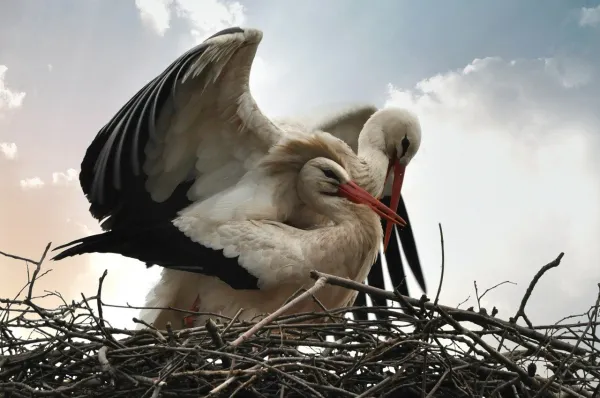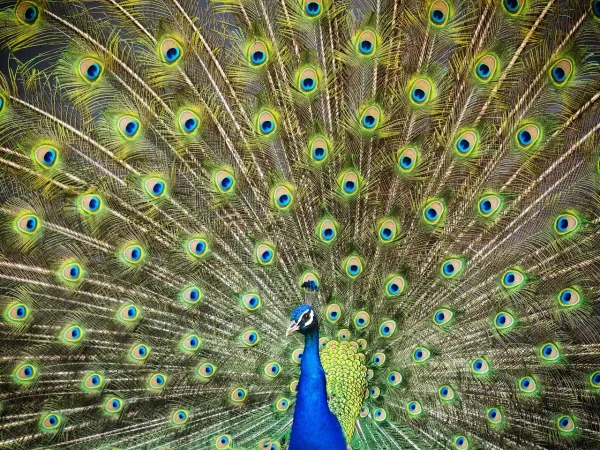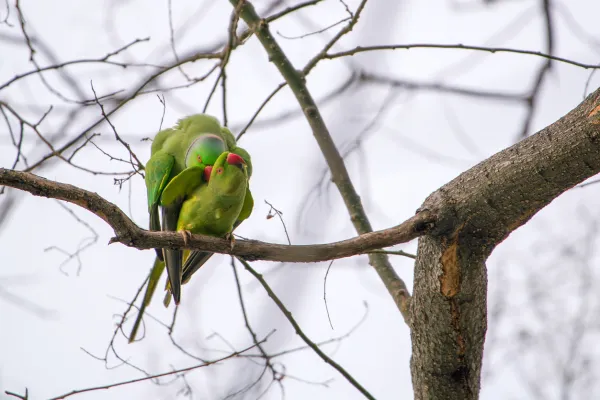Finding a mate can be a challenge for humans, and the same is true in the animal kingdom. Many animals go through elaborate displays and behaviors to attract partners—and birds are a fascinating example. From melodic songs to spectacular feather displays like that of the peacock, bird reproduction is a complex and captivating process.
In this article, we’ll explore the complete cycle of bird reproduction: when it begins, how courtship works, how mating occurs, the importance of nesting and incubation, and how birds care for their young.

Each bird species has its own breeding season, which is primarily influenced by environmental factors such as:
Temperature: Warmer temperatures lead to earlier and more abundant food availability. This triggers the reproductive season. For migratory birds, rising temperatures also signal their return to breeding grounds.
Daylight hours: Longer daylight stimulates hormone production and reproductive behavior.
Food supply: Birds need access to sufficient food to sustain reproduction and chick rearing.
Mate availability: The presence of suitable partners is essential.
For most species, spring is the primary breeding season. Birds living at higher altitudes have a shorter window to breed, so their eggs develop and hatch more quickly.
However, some exceptions exist:
Crossbills (Loxia curvirostra) may breed in winter when pine seeds are plentiful.
Pigeons and doves can breed year-round, often near human habitats where food is constantly available.
During the breeding season, birds undergo noticeable behavioral and physical changes known as courtship displays. These behaviors may include:
Colorful plumage: Birds may grow or show off brighter feathers.
Complex songs: Male birds sing intricate tunes to capture the attention of females.
Dances and wing displays: Some species perform unique choreographed movements.
Physical contact: Gentle necking or pecking behaviors are common.
Chemical signaling: Some birds use hormonal scents to attract mates.
The purpose of these displays is to attract females, who ultimately decide whether to reproduce. Successful courtship helps the female select the best possible mate to produce healthy offspring. It also reduces aggression between individuals and helps them recognize compatible mates of the same species.
If the courtship fails, the female simply avoids the male. If successful, mating (copulation) occurs next.

Birds reproduce using a structure called the cloaca, a common cavity used for excretion and reproduction. Here's how it works:
The male and female align their cloacas in what’s often called a "cloacal kiss."
The male transfers sperm into the female’s cloaca.
Some bird species (like ducks) have an extendable reproductive organ, but most do not.
Fertilization happens internally, and within 2 to 3 days, the embryo begins forming inside the egg. Birds are oviparous, meaning they lay eggs. These are amniotic eggs, containing all the nutrients an embryo needs to develop outside the mother's body.
Birds claim territory and protect their future offspring by building nests in various locations, including:
Trees or shrubs
Tall grass or ground depressions
Sand dunes or cliffs
Burrows underground
Piles of leaves or decomposing organic matter
Males are often responsible for nest construction, using this process as part of the courtship to attract a mate. In some species, males build the nest only after the female is fertilized.
Nest types vary greatly and may include:
Cup or bowl-shaped nests
Hanging or woven nests
Ground nests or shallow scrapes
Eggs buried in decomposing matter for warmth
A striking example is the Great Bowerbird (Chlamydera nuchalis), whose male builds a tunnel leading to the nest, placing carefully arranged objects around it to create optical illusions that make him appear larger and more attractive.
Once the nest is built, the female lays eggs—usually one per day.
Incubation begins immediately and is crucial to embryonic development. The female warms the eggs by sitting on them, while the male typically gathers food. In some species, both parents take turns incubating. Depending on the species, incubation can last anywhere from 10 to 60 days.

After the incubation period, chicks hatch using a specialized egg tooth, a temporary structure that helps them break the eggshell. Since eggs are laid at intervals, chicks may hatch on different days, though some species synchronize hatching.
Both parents typically care for the young, including:
Feeding: Parents regurgitate food to make it easier for chicks to consume.
Protection: Keeping chicks warm and guarding them from predators.
Teaching: Guiding chicks to fly, forage, and even sing.
Parental care is vital for survival and development, and in many bird species, it continues until the chicks are fully fledged and independent.
The reproductive process of birds—from courtship to chick rearing—is a marvel of nature, showcasing incredible behaviors and biological adaptations. Understanding how birds reproduce helps us better appreciate their roles in ecosystems and contributes to birdwatching, conservation, and environmental education.
If you'd like to explore more about birds, check out our related articles on endangered bird species, bird songs, and the evolutionary traits of avian life.
Bibliography
ScienceAQ. (2019). Which year do wild birds release eggs? Available at: http://it.scienceaq.com/Nature/100213957.html
Plitt, L. (2010). The bird that uses an optical illusion to attract females. Available at: https://www.bbc.com/mundo/ciencia_tecnologia/2010/09/100915_ave_ilusion_optica_lp
Ackerman, J. (2016). Why Bird Fathers are superior. Available at: https://www.wsj.com/articles/why-bird-fathers-are-superior-1466086239
animal tags: Bird Reproduction
We created this article in conjunction with AI technology, then made sure it was fact-checked and edited by a Animals Top editor.